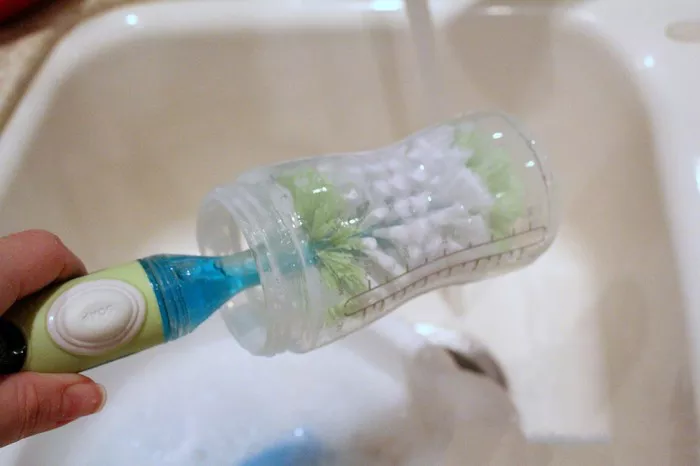Breastfeeding is often celebrated for its numerous health benefits for both the mother and the baby. However, for various reasons, many mothers choose to use breast pumps to express milk. While breast pumps offer convenience and flexibility, it’s crucial to understand the importance of sterilizing them properly. Failure to do so can lead to serious consequences for both the mother and the baby. In this article, we will explore the potential risks associated with not sterilizing breast pumps and emphasize the importance of proper sterilization techniques.
Understanding Breast Pump Contamination:
Breast milk is a perfect source of nutrition for infants, providing essential nutrients and antibodies that help protect against infections and diseases. However, breast milk can also become contaminated if proper hygiene measures are not followed during expression and storage.
Breast pumps come into direct contact with breast milk, as well as with the mother’s skin and potentially other environmental contaminants. Without thorough cleaning and sterilization, bacteria, viruses, and other harmful microorganisms can thrive in the pump’s components, posing a significant risk to the health of both the mother and the baby.
Potential Risks of Not Sterilizing Breast Pumps:
1. Bacterial Contamination: One of the most significant risks of not sterilizing breast pumps is bacterial contamination. Bacteria such as Staphylococcus aureus and Escherichia coli can multiply rapidly in moist environments, including the surfaces of breast pump components. When contaminated milk is fed to the baby, it can lead to gastrointestinal infections, diarrhea, and other serious illnesses.
2. Viral Transmission: Viruses, such as hepatitis B and HIV, can also be transmitted through contaminated breast milk. While the risk of transmission through breastfeeding is generally low, using a contaminated breast pump can increase the likelihood of viral transmission from mother to baby. Proper sterilization is essential for preventing the spread of infectious diseases.
3. Yeast and Fungal Infections: Yeast and fungal infections, such as thrush, can occur when breast pump components are not adequately sterilized. These infections can affect both the mother’s breasts and the baby’s mouth, leading to discomfort, pain, and difficulty breastfeeding. Sterilizing breast pump parts can help prevent the growth of yeast and fungi, reducing the risk of infection.
4. Cross-Contamination: In addition to contaminating breast milk, a lack of sterilization can also lead to cross-contamination between different users. If breast pumps are shared or used by multiple mothers without proper cleaning and sterilization between uses, there is a risk of transmitting infections from one person to another. This is particularly concerning in healthcare settings where breast pumps may be shared among patients.
5. Reduced Milk Quality: Improperly cleaned and sterilized breast pump parts can also affect the quality of expressed milk. Residual bacteria and contaminants can alter the composition of breast milk, reducing its nutritional value and potentially causing it to spoil more quickly. This can compromise the health and well-being of the baby, especially if they are premature or have underlying health conditions.
The Importance of Proper Sterilization Techniques:
Given the potential risks associated with not sterilizing breast pumps, it’s essential for mothers to understand and implement proper sterilization techniques. Here are some key guidelines to follow:
1. Disassemble and Clean After Each Use: Immediately after using a breast pump, disassemble all the parts that come into contact with breast milk, including the pump mechanism, bottles, valves, and breast shields. Rinse them thoroughly with warm water to remove any milk residue.
2. Use Hot, Soapy Water: Wash the disassembled breast pump parts with hot, soapy water using a clean brush or sponge. Pay close attention to any crevices or hard-to-reach areas where bacteria may hide. Rinse the parts thoroughly to remove all traces of soap.
3. Sterilize Regularly: In addition to daily cleaning, it’s important to sterilize breast pump parts regularly to kill any remaining bacteria or microorganisms. There are several methods of sterilization available, including boiling, steam sterilization, and chemical sterilization with specialized solutions. Choose a method that is convenient and practical for your needs.
4. Allow Parts to Air Dry: After cleaning and sterilizing breast pump parts, allow them to air dry thoroughly before reassembling and storing them. Avoid using towels or cloths to dry the parts, as these can introduce new contaminants.
5. Store Pump Parts Properly: Once sterilized, store breast pump parts in a clean, dry place away from dust and other potential contaminants. Use a dedicated storage container or bag to keep the parts organized and protected between uses.
Conclusion:
Properly cleaning and sterilizing breast pumps is essential for ensuring the safety and well-being of both mothers and babies. Failure to sterilize breast pump parts can lead to bacterial contamination, viral transmission, yeast and fungal infections, cross-contamination, and reduced milk quality. By following the guidelines outlined in this article and implementing regular sterilization practices, mothers can minimize the risk of contamination and provide their babies with safe and nutritious breast milk.


